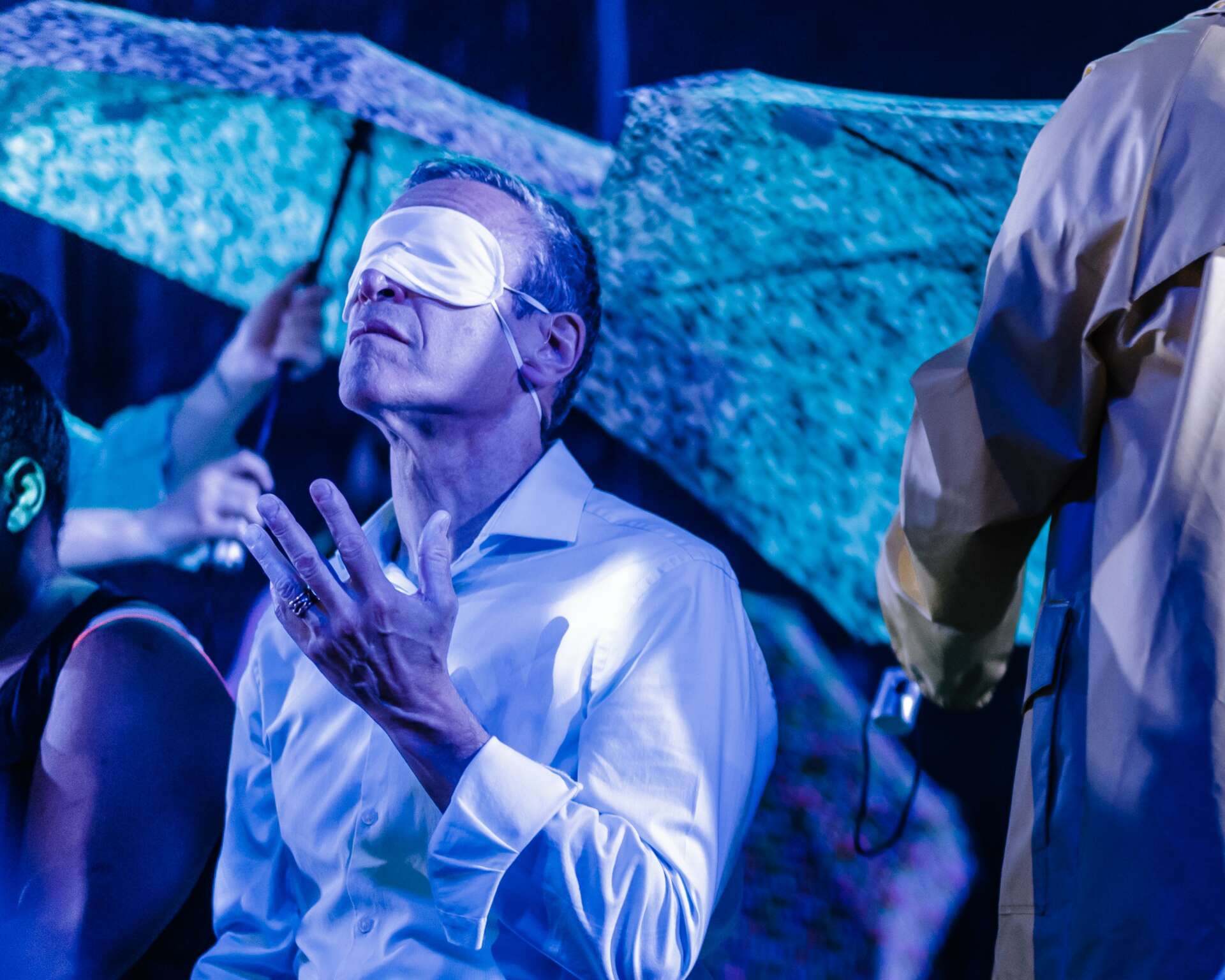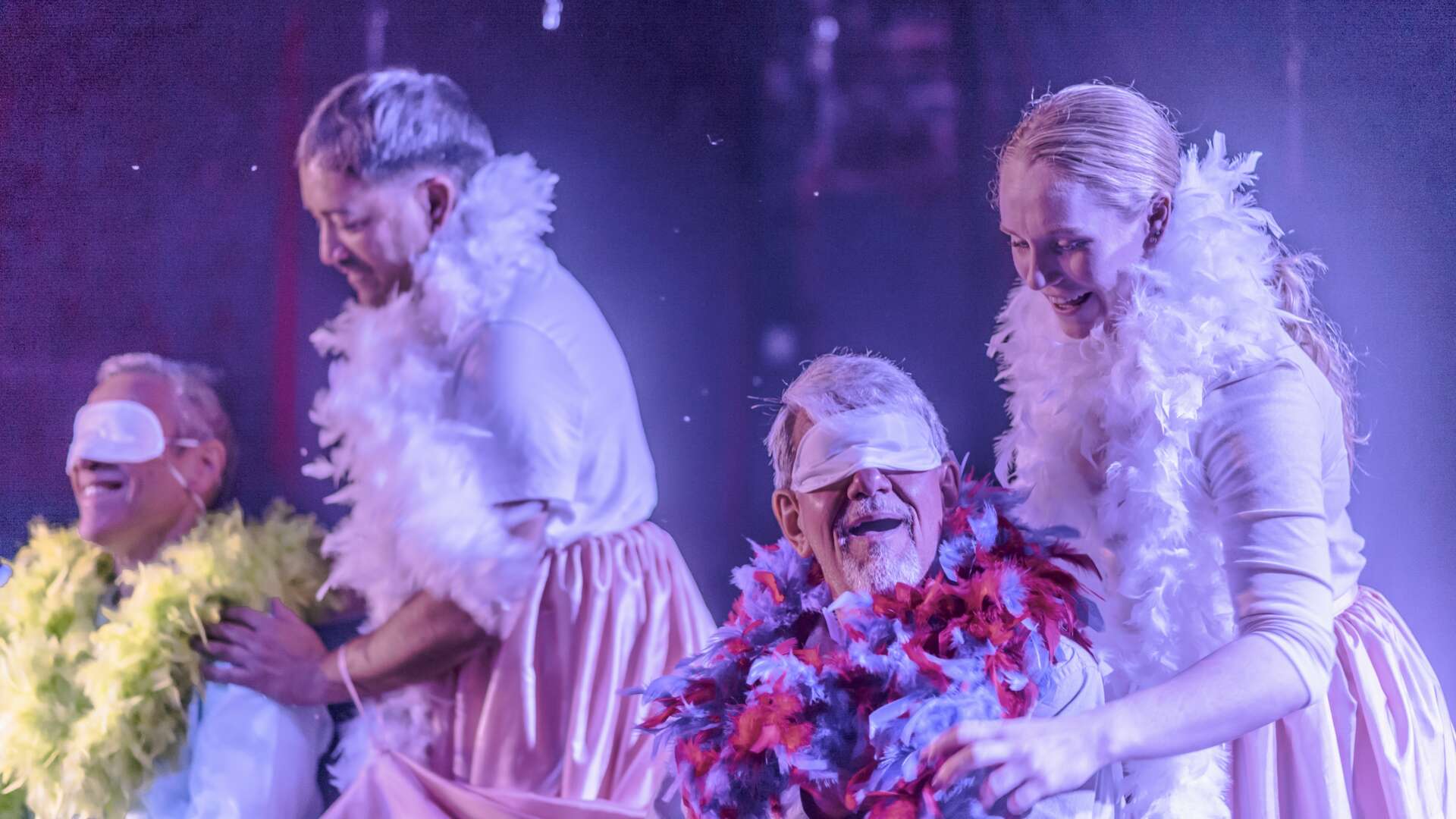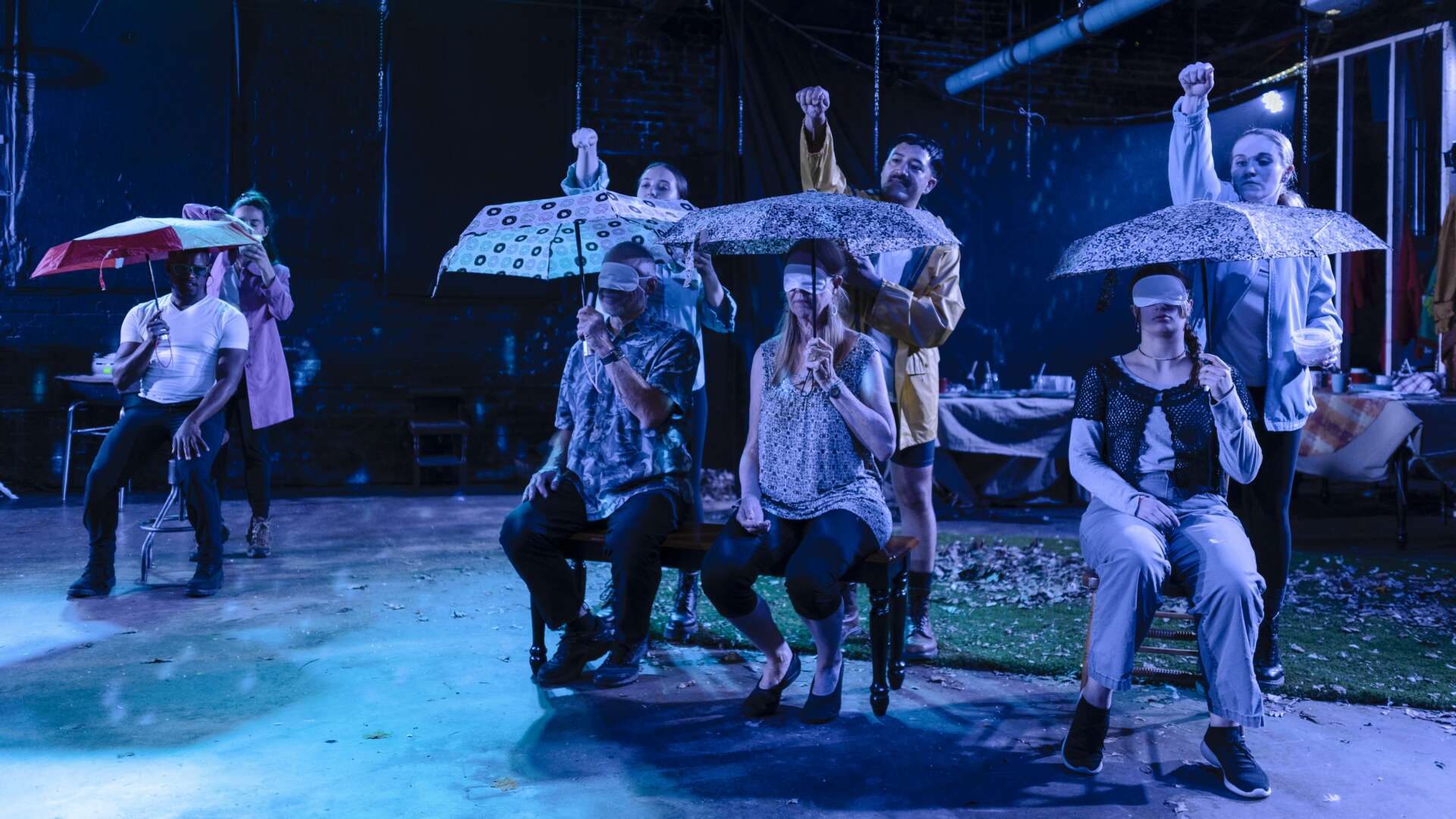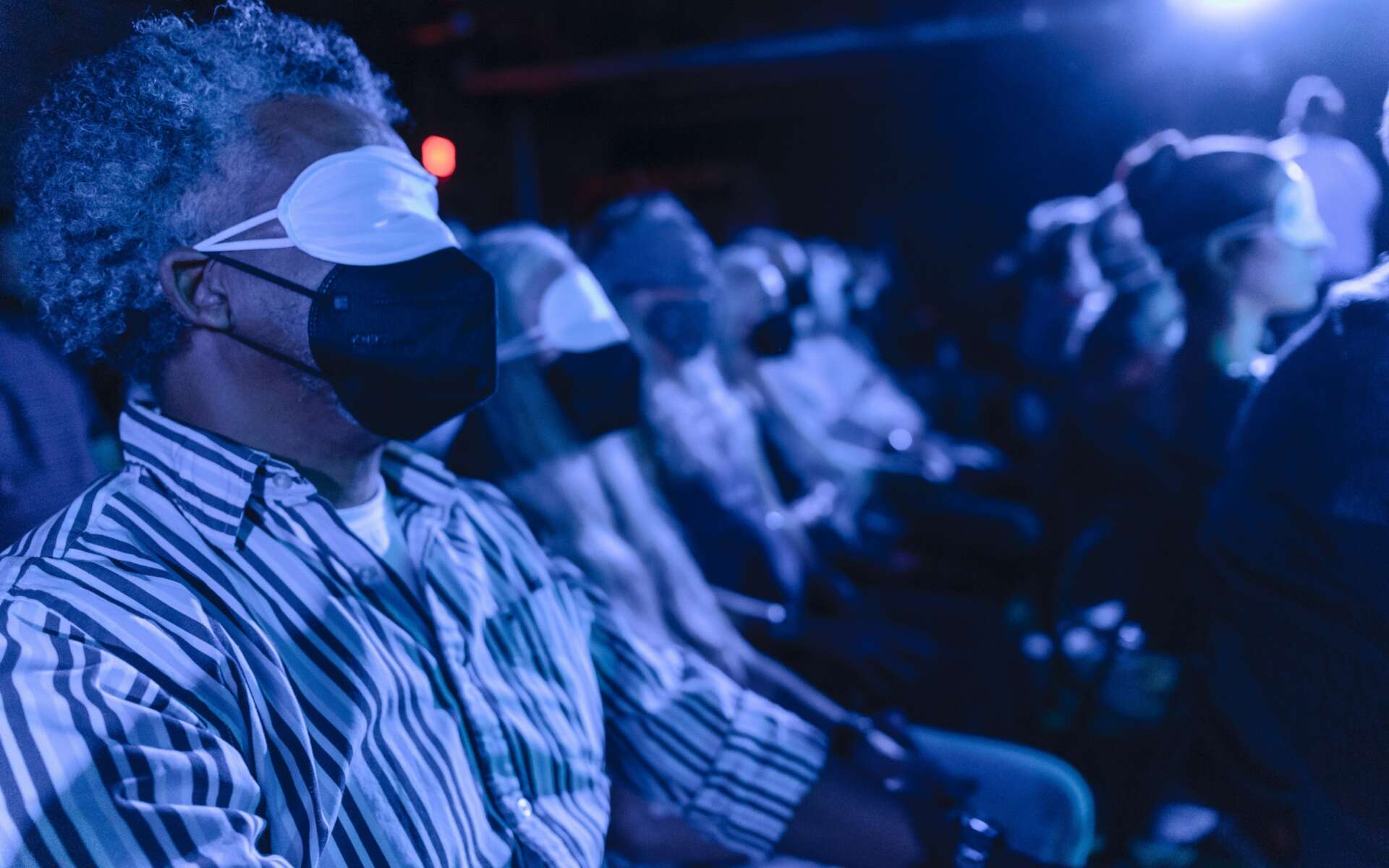We’re excited to introduce you to the always interesting and insightful ShaLeigh Comerford. We hope you’ll enjoy our conversation with ShaLeigh below.
ShaLeigh , thanks for taking the time to share your stories with us today Can you talk to us about a project that’s meant a lot to you?
In 2019, I was commissioned by the non-profit organization Arts Access to create a new work with Davian Robinson (DJ), a dancer who lost his sight as a child. I knew from the moment we began working together that we were forging an expansive collaborative partnership. Our personal movement research and choreographic ideas had an incredible collective synthesis with one deepening the other. He called me on the phone one day while he was completing his degree at UNC Charlotte to share with me that he had just experienced his first dance performance without needing to ask his sighted mentor what had just happened. This is where the story of our project really began. I asked a thousand questions about how. We began to discuss how traditional ocular-centric models limited the potential for everyone to experience a multi-sensory approach to dance. I was curious about what possibilities could come from a practice that embraced touch and hearing as equals to vision. Audio description is an established access tool for blind and partially sighted people but does this verbal way of describing events truly allow access to the experience of dance? How could words express that dance is visceral, not just visual? How can descriptive language leave room for audience agency?
The pandemic delayed our process until August 2021, when we were finally able to begin working together in the studio. We invited Krishna Washburn, a former mentor of DJs and the founder of Dark Room Ballet to join us as a consultant to help with our research. We knew we were going to have to bump up against a lot of the ableist principles that are not only in society and culture, but also in dance classrooms, theaters, and collaborative relationships. We also invited five community members who live with low-vision and blindness to join us as paid collaborators. Together we wanted to create a dance-theatre performance that would be accessible to both audiences who have their sense of vision and to people who live with blindness and low vision. We saw an opportunity to research, design, and create movement practices that could offer new avenues of embodiment and performance.
We also wanted to address bridging the gap of inclusivity and accessibility in both the studio as well as the theatre. Over the course of the year, we brought together a team of collaborators around a single challenge: to tell a story through dance and theatre beyond their visual dimension. We initially planned to guide six audience members into the setting of the work and ultimately expanded the opportunity to also include six seated audience members to receive a more immersive activation of the senses. The work told a collective story that uplifted the experiences of those living with low vision and blindness through textures, movements, sounds, music, scents, storytelling, and audience participation. Participatory audience members who were sighted wore a cover on their eyes as they entered the work from the beginning to the end of the performance allowing both sighted and unsighted people to share the experience. The general audience was given a choice to see the work or experience the work wearing a blindfold. The work was designed to share an experience, and it was about stepping into the shoes of people that live in a world that’s not dominated by sight. Because this is a world that we, the sighted, will never understand unless we step into it.
The world premiere opened the 89th American Dance Festival’s Season with five performances June 3-5th. We took a lot of risks and really had no idea how it would be received. But we were utterly amazed and overjoyed that every show sold out even on a weekend against Hamilton. We also received several outstanding reviews and so many incredibly powerful responses from audience members. One of the responses that I will never forget came from an audience member who lives with low vision. He said he had a moment when he was sitting in the audience realizing that he was sharing the theatre with a room full of people wanting to understand him. We both welled up with tears. It was an incredible beginning to what I know will continue for years to come: to design empathic bridges that have the capacity to create cultural understanding and hopefully real change in our world.




Great, appreciate you sharing that with us. Before we ask you to share more of your insights, can you take a moment to introduce yourself and how you got to where you are today to our readers
My journey actually began in the second grade when I made my first duet to Tchaikovsky’s nutcracker for the second grade talent show. I was also the second oldest of five children and was constantly creating work and casting them as my stars. This included everything from theater to dance to film, painting and photography. My siblings were my world growing up. Sometimes I would just have them close their eyes and walk them around the yard telling stories from the textures and the sounds around us. I was constantly creating new worlds for us to step into and share like shaking up a tiny little snow globe that we could step into.
I often think that I’m still just recreating what I loved so much about being a big sister. My whole life seems to have made it into what I do today. I had a lot of interests growing up. I was privileged to have the opportunity to begin playing violin in second grade and I started drawing and painting well before that. I remember taking my first ballet and tap class well before kindergarten. By the time I was 10, I had the opportunity to make my first professional stage debut as the lead in the musical theater production of Alice in Wonderland.
My journey took me down many different paths from being a visual artist to a social worker, from a performer to a teacher, and ultimately from a choreographer to director which seems to encompass it all. Regardless, what nits it all together has been a lifelong passion for people, art, and designing shared experiences that uplift the human condition in relation to inequalities and forces of erasure. My work stresses our instinctive human need to connect regardless of race, class, age, ability, or gender. Creating for me has always been a sacred, shared experience. I believe in an approach that democratizes process and performance through a practice of autonomy and agency. For an artform whose tool is the body, this work and my movement language are constantly responding to cultural and political pressures that suppress and subjugate. Both teaching and making are deeply entwined with my engagement practices of working together as “othered” bodies with unique differences and shared humanity. I see otherness as a promise of richness for everyone, proclaiming to the world that there will always only ever be one of us, and that we have something to say in a way that only we can say it. My work constantly teaches me. Sharing our stories, our vulnerabilities, and our differences with audiences continuously feeds my belief in the transformative power of performance. It reminds me that though there are only a handful of emotions, the difference that lives in the telling opens up a whole new spectrum that can be felt and understood.
My career really began to take off after moving to New York City in 2006 where I got my first show within just a few months of living there. I premiered a new work called Dedicated to [ ] because of [ ] (and vice versa) for Movement Research at the Judson Church and that work toured until 2015. I left the city in 2009 to work internationally for a few years as a performer and choreographer and landed in North Carolina in 2015. I initially decided to found my company ShaLeigh Dance Works (SDW) to meet the need for professional development and opportunities for local dancers and artists of all abilities. By 2017, I was programming full seasons. Over the past six years, SDW has grown from a fiscally sponsored organization to an official 501(c)(3) and has been nationally recognized for innovation in the dance field. We continue to work directly with artists to nurture the current and next generation, deepen and expand talent, create new works, and make the arts accessible to those with different abilities. From inspiration to world premiere, we annually commission artists to create new work. Since 2015 we have commissioned 11 composers, and contracted over 140 artists and collaborators from dancers and artistic consultants to photographers, filmmakers, and costume, set, lighting and sound designers. In addition, our programming has provided access to art and education experiences to over 6400 differently abled individuals throughout the triangle through performances, master classes, community classes, and workshops.
Each year, we create programming at the intersection of art, culture, and social change to enrich our local communities. Engagement practices are an integral part of our work and include key partnerships with organizations such as Arts Access and The Reality Center to provide advocacy, opportunities, and access to the arts for all people. With a focus on artistic excellence, nurturing artists, and designing programs to empower those impacted by marginalization, SDW aims to provide a concrete example of how dance can transform people’s lives and enrich society. As we enter our 7th season in NC, we are celebrating numerous achievements and recognition by nationally recognized performing arts organizations.
What do you find most rewarding about being a creative?
My work as an artist constantly challenges me and there is a part of me that is really driven by that challenge. It’s hard. It’s a vulnerable experience. It demands that every part of me show up and pushes me to do what feels at times like it’s literally impossible. Every new beginning, every new venture or new work comes with the risk of failure and I have come to embrace that. I know that if that fear isn’t present, I am not growing or giving.
The depth of the rewards tend to match the depth of the risk. I learned a long time ago that it’s not talent alone that creates a career in this field, it’s being someone who can’t not do it or who must do it. There is this feeling of being compelled by something deep within me and it reaches out like open arms wanting to connect with everyone from my dancers and collaborators to our audiences to people who are suffering to the world at large. It’s a way of participating in this messy but beautiful world and bringing new possibilities to what feels like impossible situations.




In your view, what can society to do to best support artists, creatives and a thriving creative ecosystem?
A thriving creative ecosystem begins with public acknowledgement. This can take the form of showing up, sharing their work, sharing our experience of the work, donating, and advocating. Valuing artists and creatives begins when we truly consider how crucial they have been to our innovation and advancement from the very beginning of recorded history as well as to our own personal lives. Right now, in our digitized society, we value product over process. If we can promote a cultural shift in our perspective on the value of creative capital, we will begin to understand the importance of supporting artists both in their process as well as their product. Nothing would exist without their invaluable creative process. It’s as important to support them behind the scenes as it is in the public eye. A few ways to do this is to consider becoming a sustainer, donate to their Patreons, or support local artistic hubs that are devoted to the incubation of ideas.
Contact Info:
- Website: https://shaleighdanceworks.com
- Instagram: https://www.instagram.com/shaleighdanceworks/
- Facebook: https://www.facebook.com/shaleighdanceworks/
- Linkedin: https://www.linkedin.com/company/shaleigh-dance-works
- Twitter: https://twitter.com/shaleighdance
- Youtube: https://www.youtube.com/user/shalsnina
Image Credits
All photos by Slater Mapp


